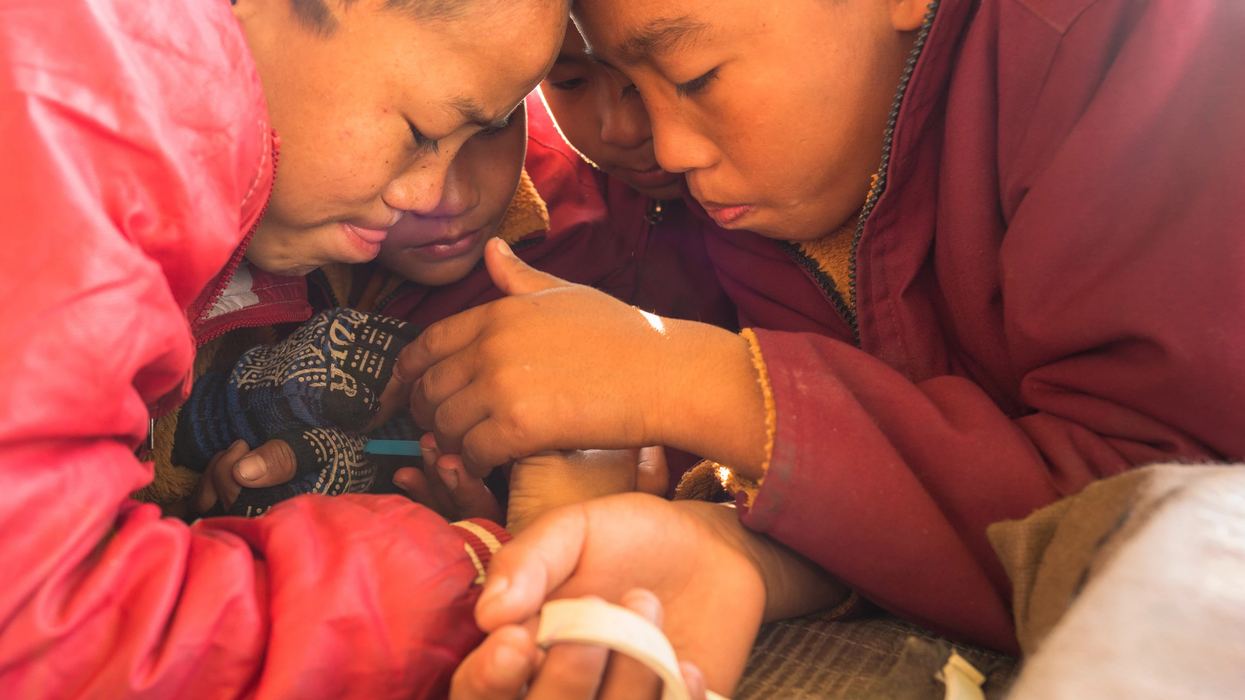4 Production Ideas to Help Structure Your Documentary in Post
Coming from a visual arts background gave Yuqi Kang a unique approach to structure for 'A Little Widsom'.

[Editor's Note: No Film School asked Amitabh Joshi to write about the post-production techniques of the film he worked on, 'A Little Wisdom'.]
A Little Wisdom is director Yuqi Kang’s intimately observed portrait of orphaned monks living in an isolated monastery in Lumbini, Nepal. In the birthplace of the Buddha, the film follows the daily routine of novice monk Hopakuli, and his older brother Chorten, left by their mother at Karma Samtenling Monastery. Yuqi comes from a drawing and painting background and approaches structuring films in a similar way. In pre-production, she developed a strong vision of the film that sprouted from her deep understanding of the pacing and the type of story she wanted to tell. She finds this process similar to sketching and getting “a sense of proportion and outlining.”
Yuqi started this documentary film in 2014 at the School Of Visual Arts Social Documentary program. In 2015, she traveled and lived at a monastery in Nepal for about a year and developed strong relationships with the novice monks. In 2016, she invited me and Paola Ochoa (both SVA Social Documentary alumni) to work as cinematographers on the film. I had a link to the story as a Nepali-American filmmaker based in New York City, who directed the documentaryTashi’s Turbine, which also takes place in Nepal. A Little Wisdom had its World Premiere at Busan International Film Festival and most recently had its North American Premiere at SXSW. Now, it's been selected for competition at HotDocs next month.
Yuqi's approach to structure is unique in that it creates a tapestry and rhythm that gives you a strong sense of place but also propels the story forward. Below are some ideas that Yuqi relied on during production to keep the story structure strong during her editing process.
1. Place can dictate how a story is told
From pre-production, Yuqi knew that she wanted a film that would capture the sense of place. Lumbini, birthplace of the Buddha, is a pilgrimage site for thousands and therefore her decision to have a more meditative pacing to the entire film reflected the location. The film's story consultant Alan Berliner suggested filming long takes and static shots on tripods. This dictated how the shots were composed and the length of the sequences. There are endless options of style and choice in documentary production, but very early on, she decided on a pacing and style that reflected Lumbini. Allow your location and subjects to influence how the film is paced—and film with an editor’s eye.
The casting process in documentary is just as important as it is in fiction films.
2. Be critical of your subjects during casting
Yuqi spent a year trying to locate the right subjects for her film. The casting process in documentary is just as important as it is in fiction films. Try to find subjects who are continually exciting, have a screen presence, and are open to revealing themselves. It’s extremely important to find subjects that are currently going through a process of change. In the case of Hopakuli (the main subject of the film), Yuqi knew that his older brother Chorten might leave the monastery. It was important for her to capture subtle changes with Hopakuli and his brother. The aim was not to capture dramatic moments but intimate moments of childhood in a monastery.
It required Yuqi months of developing relationships with the children to locate the right subjects. Spending this kind of time is important to try to anticipate what changes your subjects might confront while filming. Yuqi began to understand the problems Hapokuli and Chorten faced as brothers and started to capture moments that told a universal story about siblings and brothers. With the material gathered she knew she had a beginning, middle and end for her film.

3. Capture scenes
It’s important to try to capture full scenes during production. Terms like "B-roll" were never used while filming this documentary; we considered everything that was shot as footage that would be used towards storytelling. Yuqi emphasized the need to capture complete scenes. Yuqi had developed a good sense of the children’s behavior and routine, which allowed us to be at the right place at the right time. She knew where certain scenes might take place and how they might play out. As a crew, we were continually around the children and, as with most docs, they forgot that we had cameras after a point.
4. Sound gives you a sense of place
Yuqi crafted a soundscape that brings to life the nature around Lumbini. She gathered different sounds during production and, in post, crafted a world from the perspective of the children living in the monastery. There are moments throughout the film that are punctuated by sounds of crows or howling of dogs. The sound is being used as a storytelling tool to see the fascinating world of Lumbini from a Hopakuli’s perspective and imagination. The goal was to create an immersive sound experience. During production, think about how sound could help to identify specific characters or convey their reality and fears.
'A Little Wisdom' will continue to showcase at festivals throughout the year.











